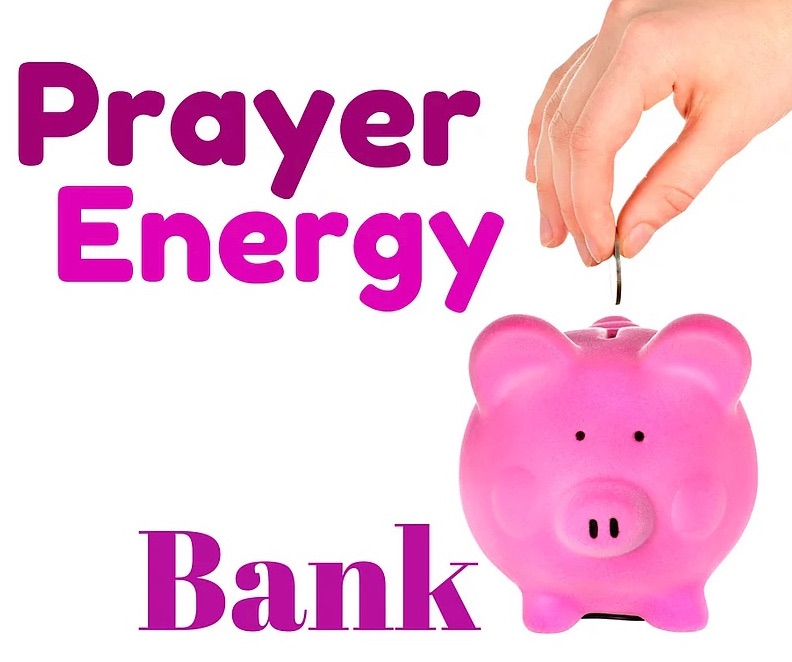In a world where faith is a guiding force for many, the concept of a Spiritual Bank emerges as a beacon of hope and solidarity. Much like a traditional bank, where monetary deposits are made and loans are extended, the Spiritual Bank operates on a celestial level, where prayers serve as the currency and support from a higher power making this the ultimate universal credit.
The Concept
The idea behind the Spiritual Bank is simple yet profound. Prayers offered up to the devine by individuals are collected and stored, forming a reservoir of spiritual energy. These prayers are not just mere words, but earnest expressions of hope, gratitude, and supplication, directed towards the divine.
Deposits and Withdrawals
Every prayer sent to the Spiritual Bank serves as a deposit, adding to the collective pool of spiritual currency. These deposits can be made by anyone, at any time, with no discrimination based on creed, nationality, or belief system. Each prayer, regardless of its length or complexity, carries equal weight in the eyes of the Spiritual Bank.
When individuals find themselves in need of divine intervention or spiritual support, they can make a withdrawal from the Spiritual Bank. This withdrawal manifests as a tangible form of assistance, be it guidance, comfort, strength, or solace, bestowed upon the recipient by the divine.
The Power of Collective Faith
What sets the Spiritual Bank apart is its reliance on the power of collective faith. Just as a single drop of water contributes to the vastness of the ocean, each prayer offered adds to the strength and resilience of the Spiritual Bank. It is through this collective effort that miracles are made possible, as the combined energy of countless prayers converges to bring about positive change in the lives of those in need.
Accessibility and Inclusivity
One of the most remarkable aspects of the Spiritual Bank is its accessibility and inclusivity. Unlike traditional financial institutions, which may impose barriers based on socioeconomic status or credit history, the Spiritual Bank welcomes all who seek solace and support. There are no prerequisites or eligibility criteria; the only requirement is a sincere heart and a willingness to believe in the power of prayer.
Conclusion
In a world often fraught with uncertainty and despair, the Spiritual Bank stands as a beacon of hope and reassurance. It reminds us that, regardless of our circumstances, we are never alone in our struggles. Through the simple act of prayer, we can connect with something greater than ourselves and draw upon an infinite wellspring of love, compassion, and grace.
As the deposits of prayers continue to pour in, and the withdrawals of divine assistance are made, the Spiritual Bank remains ever-present, as a testament to the enduring power of faith and the boundless generosity of the divine.
Deposit Prayer (Example)
“Dear Divine Creator,
I humbly offer this prayer to the Spiritual Bank, as a deposit of hope and healing for all those in need at this time. May your guiding light illuminate the paths of those who are lost, your comforting embrace soothe the hearts of the grieving, and your boundless love uplift the spirits of the downtrodden.
Grant strength to the weary, courage to the fearful, and solace to the afflicted. May this collective outpouring of prayers serve as a beacon of hope in dark times, a source of comfort in moments of despair, and a reminder that, through faith and unity, we can overcome any obstacle.
May the blessings of the Spiritual Bank flow abundantly to all who seek support and guidance, bringing forth miracles to those in need.
Amen.”
Withdraw Prayer (Example)
“Dear Divine Provider,
I come before you now, a humble recipient of the blessings stored within the Spiritual Bank. In this moment of need, I seek your guidance, your strength, and your unwavering love.
Grant me the courage to face the challenges before me, the wisdom to discern the right path, and the faith to trust in your divine plan. May the spiritual credit accumulated through the prayers of countless souls be bestowed upon me now, filling my heart with hope and my spirit with resilience.
In your infinite mercy, shower upon me the grace and support I require to overcome obstacles and emerge victorious. May the withdrawals from the Spiritual Bank manifest as tangible miracles in my life, uplifting me in times of darkness and leading me towards the light of your eternal love.
With gratitude and trust, I receive these blessings, knowing that you are always with me, guiding and protecting me every step of the way.
Amen.”
